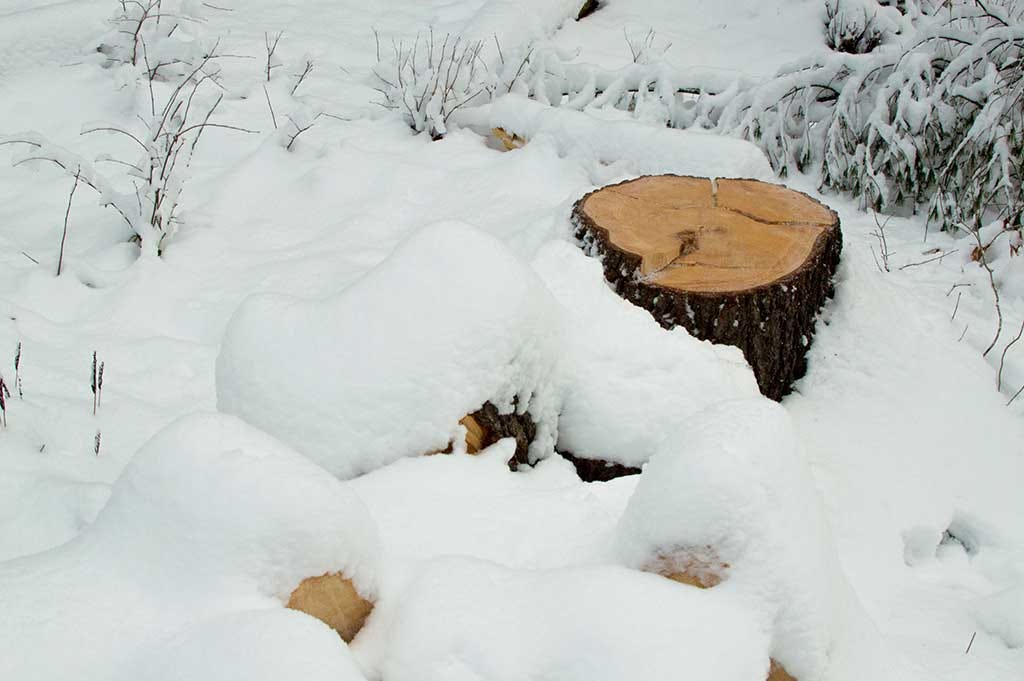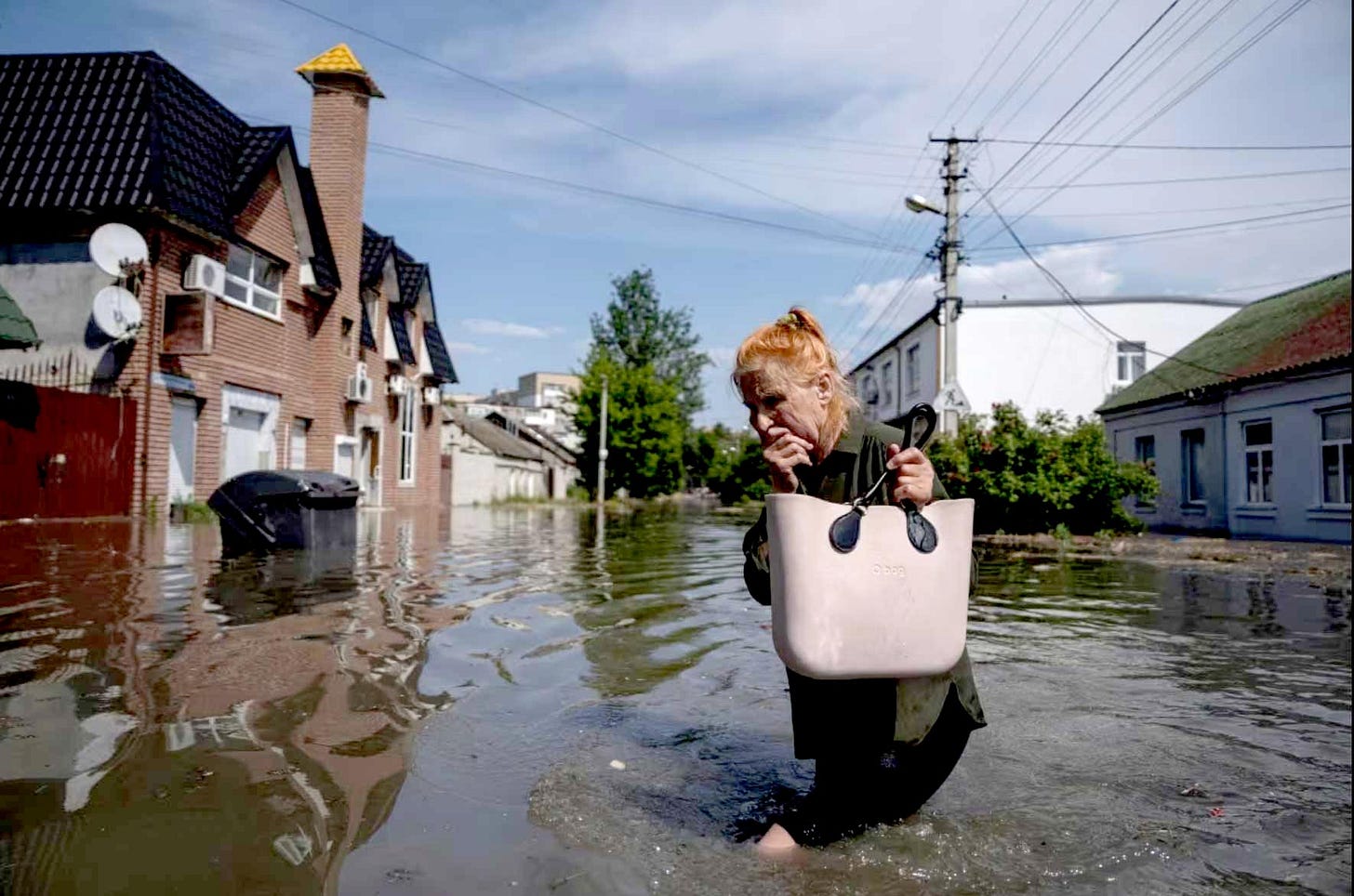I was gone on Sunday, October 29, 2017 when a massive windstorm hit Vermont. Hurricane-force winds swept through the entire state and were particularly strong in Chittenden County where I live. Winds atop Mt. Mansfield, which overlooks the town of Underhill were clocked at 115 mph. It was my birthday.
Electricity was cut to more than 45,000 homes. Folks who have worked at Green Mountain Power for decades said they had never seen this many people without power at one time. I returned to witness the cause, thousands of trees snapped off or uprooted and toppled over. I read about a neighbor in Moretown who was trapped alive under a massive fallen tree for 12 hours, pinned in his bed while he was asleep, where he remained helpless until someone discovered him the next day.
Safe from the storm in Wisconsin, I had been spending days shuffling and sorting out my life, clearing out a 10’ X 20’ storage locker which contained boxes full of photos, clippings and file folders collected by me and several generations who lived before me, a family archive. It felt like traveling back in a time machine, past the faces of so many dead people and the things we thought were so important: births, graduations, awards, weddings and deaths.
I came back to Vermont feeling liberated having let go of so many unnecessary possessions only to face the devastation that had come to pass in my absence. At the crest of the quarter-mile driveway to my home, a huge red pine had fractured and broken off at about 7 feet above the ground. The body of the tree had fallen across the driveway. What remained of the trunk was a splintered testimony of the battle that must have ensued with the wind claiming victory.
I drove past the brutal reminder for several days before I finally had to put the tree to a respectful and final rest on Thanksgiving Day. The 18” bar of my Husqvarna saw barely made it past the midpoint of the trunk as I began to take down what remained of this noble giant. When it toppled over, I looked at the clean cut base and then started counting the rings. As I neared the outer edge I counted 69, 70, 71. This tree and I began our lives together! We had both lived for 71 years, and it died in a windstorm on my birthday.
Every time I pass over the crest of that hill and head down to the highway, I see the rings in the stump of that tree and wonder what the future holds for me. I think about the relevance of who and what remains important in this lifetime and what it is that I still wish to accomplish before I too am toppled by the wind.
Six years later… in July of 2023, I left the state once again to venture back to my former home in Door County, Wisconsin. So much unexpected change had reshaped my life. On 9/11 2020, I woke up on a ventilator in the ER having broken most of the bones on the right side of my body in a motorcycle crash. “We could amputate your right leg and you’d be home in three to five days,” one surgeon advised. “Let’s talk about lifestyle,” another suggested. After our talk, he said, “Let’s make amputation our Plan B.”
I spent the next four months undergoing seven surgeries in the midst of the COVID outbreak. I had to learn how to stand up and walk all over again, and realized the power of intention. After leaving the hospital, I found a way to turn the insurance settlement into a home on Browns River. The mind-body continuum became the focus of my daily existence. None of this was anything short of miraculous. Now, I was returning for to Wisconsin for the first time in six years. One of my daughters was getting married and I was looking forward to a reunion.
Despite having lived for more than forty years in Door County, I never felt welcome or accepted there. And yet, I had reshaped the entire hospitality industry of a place that calls itself the Cape Cod of the Midwest. When I first wintered over in 1970, the region had adopted snowmobiling as the wave of the future. The local bars were connected by a county-wide set of trails and the locals delighted in assembling convoys consisting of ten, twenty, thirty or more noisy machines to snake from bar to bar getting evermore intoxicated in true Wisconsin form. The Chamber of Commerce envisioned a network of groomed snowmobile trails to entice Chicago, Milwaukee, and Minneapolis tourists to flock to the area, thus making Door County a four-season, destination resort at long last.
I fought back, first by launching a business that imported the first lightweight French 10-speed bikes that displaced the local hardware stores’ sales of Schwinns and Huffys. Then, I introduced the unknown sport of cross-country skiing. I was a summer-kid from Chicago, an “outsider” who decided to remain after Labor Day. I was also a long-haired hippy, unafraid of controversy. Over the next several years, I began racing bicycles and became one of the first thirteen USAA certified Nordic Ski instructors in the Midwest. I convinced all five state parks in the county to establish separate cross-country ski trails, bought the bankrupt local ski hill, and after two winters of steady losses, tore down the lifts to convert it to one of Wisconsin’s first Ski Touring centers, brought 100 sets of rental skis to all of the regional high schools on a regular basis and taught thousands of kids to ski the Nordic way, and launched the area’s most popular night club for live entertainment.
Throughout the pioneering days, my mantra to the hospitality industry was, “We could be just like Vermont and have all of our inns and hotels connected by ski trails.” But I had never been to Vermont.
For all of this and more, I was despised by a significant portion of Door County locals. I had upset the norms and would continue to do so, uncovering the mean underbelly of the status quo. I will never forget the chairman of the Chamber telling me, “We don’t want any granola-munching hippies coming here to cross-country ski.” When my nightclub featured Blues artists like Koko Taylor and Luther Allison, some local business refused to allow me to hang posters because of their skin tones, not realizing that these were internationally famous recording artists.
It was with some trepidation that I booked a flight to return there after six years to attend my daughter Greta’s wedding in Gills Rock. True to form, after I could no longer cancel the ticket, she uninvited me. I have pondered long and hard over what makes people on the Door Peninsula so tribal and exclusionary. Perhaps it’s the local living-room bar culture so commonplace in the drunkest state in the Union. Perhaps it is the feng shui of being restricted to a land mass surrounded by water.
After five days in the Cape Cod of the Midwest, I was ready to return to New England. I came to Wisconsin full of energy and enthusiasm, and I left feeling very old and exhausted. The psychological impact of our environment is undeniable. The relatively new field of environmental psychology recognizes that information is stored in the brain as neural networks called cognitive maps. We believe this combination of memory, present events, ideas, and emotions is an accurate perception of our surroundings despite the fact that it is a very biased portion of the entire visual frame. We shape the environment and it shapes us.
When I left Wisconsin in 2016, I needed to wear increasingly-stronger pairs of reading glasses to see print detail in sharp focus. I had a collection of at least five pairs and a hard-shelled carrying case that I always kept with me. After living in Vermont for a short time, I no longer needed to use them. I have no logical explanation why. When I was ready to board the plane in Green Bay with about sixty other passengers, the boarding attendant at the gate invited me to board first, perceiving me as a very tired and feeble old man. When I stepped off the plane at O’Hare Field in Chicago, a very kind Pakistani man beckoned me to sit in a wheelchair and he transported me on a 10-minute ride through the airport labyrinth to the Wyndham Hotel shuttle. I did not request this service in advance. It must have been apparent to all that I had become a very feeble old man.
The next morning when I awoke, I was rejuvenated. Like a snake shedding its skin or a caterpillar emerging from a cocoon, I hopped out of bed, showered, dressed, and boarded the hotel shuttle, to walk effortlessly through O’Hare to Gate F-18 for my return flight to Burlington. I am still puzzled over the instant metamorphosis. But that was just the first of greater mysteries to follow.
In my absence, Vermont was undergoing a tragic loss, flash flooding due to torrential rain. In some regions it exceeded 8 inches in a single day. The local newspaper reported:
“Precipitation totals released by the weather service’s Burlington office just before 7:30 p.m. Monday showed that 9.05 inches of rain had fallen in Plymouth over the previous 24 hours. Elsewhere in Windsor County, 8.65 inches fell in Andover, 7.54 in Weston and 7.1 in Bridgewater Center. In Rutland County, according to the weather service, Mt. Holly was hit with 8.66 inches and Belmont with 6.86. Washington County saw 7.11 inches in Berlin, 6.87 in Waitsfield and 6.81 in Worcester. In Lamoille County, Morrisville recorded 7.02 inches and, in Orange County, Vershire had 6.83 inches.”
My home is on Browns River in Chittenden County and I had no idea what I would find upon returning. The most difficult portion of my entire round trip to Wisconsin was the 20-mile drive from Burlington airport back to my home in Underhill. At about 4 PM, thousands of cars were backed up, bumper-to-bumper for more than 10 miles, waiting to cross the flooded Winooski River via the only two-lane highway remaining open, the portion of VT15 that runs below the dam in Essex. All of the bridges were under water. It took more than two hours of driving at 2-3 mph in a slow caravan of motorists.
When I finally got home, everything was just as I had left it. Somehow, towns like Johnson, Cambridge, Hardwick and Jeffersonville along the Lamoille River, only ten miles away, were under water.
The rains had stopped and now the recovery was underway. It was like a tornado had swept down one side of a street erasing everything only to leave the other side untouched. All around me people were piling waterlogged furniture and possessions along the sidewalks and roadways. On Wednesday, the town of Johnson announced that its wastewater treatment facility was completely destroyed. All of the city’s effluent was now being dumped directly into the Lamoille River.
Outside my door, Browns River was slightly higher than usual and yet remained crystal clear. Some might say it’s just a coincidence that both times I left Vermont the state was struck by a major environmental cataclysm, and both times, I remained elsewhere, safe and unharmed. My friend Warren would call it serendipity. I tend to consider it the work of my guardian angels.







